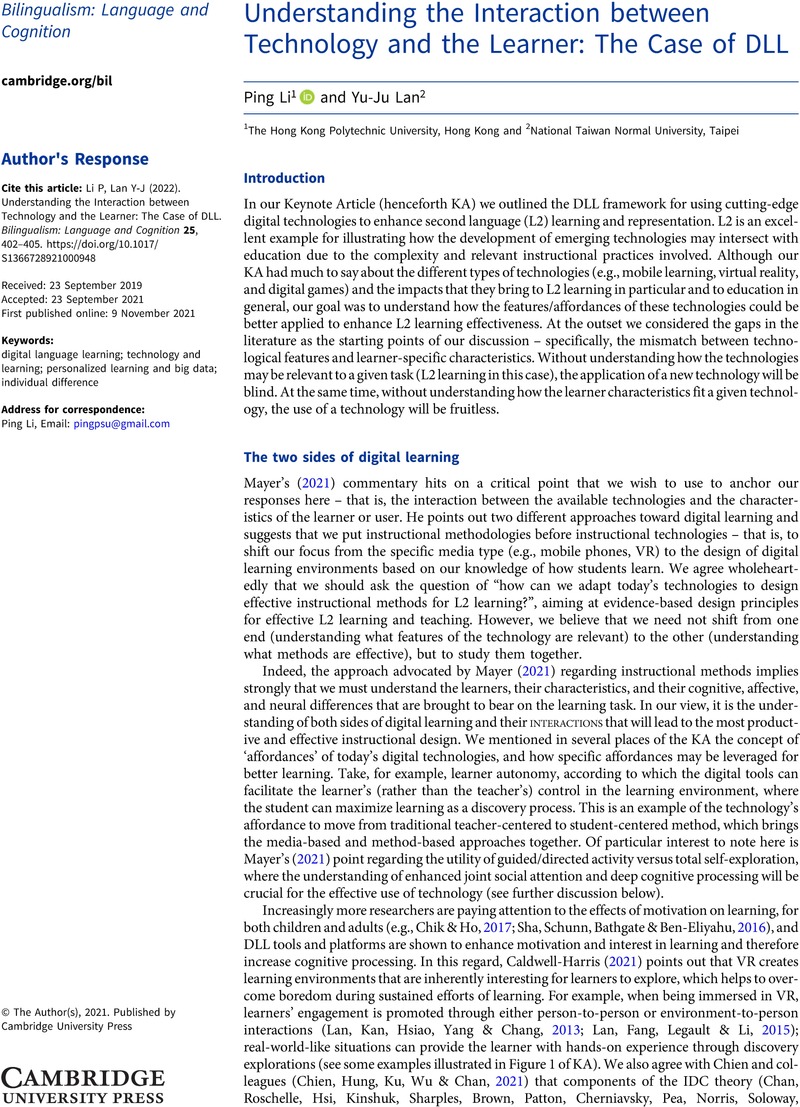Crossref Citations
This article has been cited by the following publications. This list is generated based on data provided by Crossref.
Getman, Yaroslav
Phan, Nhan
Al-Ghezi, Ragheb
Voskoboinik, Ekaterina
Singh, Mittul
Grósz, Tamás
Kurimo, Mikko
Salvi, Giampiero
Svendsen, Torbjørn
Strömbergsson, Sofia
Smolander, Anna
and
Ylinen, Sari
2023.
Developing an AI-Assisted Low-Resource Spoken Language Learning App for Children.
IEEE Access,
Vol. 11,
Issue. ,
p.
86025.
Gu, Chanyuan
Peng, Yingying
Nastase, Samuel A.
Mayer, Richard E.
and
Li, Ping
2024.
Onscreen presence of instructors in video lectures affects learners’ neural synchrony and visual attention during multimedia learning.
Proceedings of the National Academy of Sciences,
Vol. 121,
Issue. 12,
Hanks, Robert
Turin, Mark
and
Yeung, H. Henny
2024.
LINCing learners to digital literacy: supporting social integration and English language learning during COVID-19.
Multilingua,
Vol. 43,
Issue. 6,
p.
751.
Gu, Chanyuan
Peng, Yingying
and
Li, Ping
2026.
Advances in bilingualism as a dynamic process: 30 years of exploration in bilingual mind and brain.
Journal of Neurolinguistics,
Vol. 77,
Issue. ,
p.
101288.


